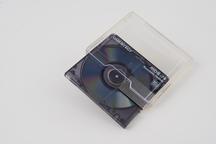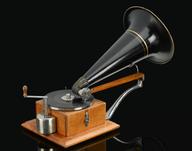

10 inch shellac 78 rpm experimental stereo disc record
- Made:
- 1934

10 inch shellac 78 rpm experimental binaural (stereo) disc record, single-sided, Columbia Test Record label entitled ‘Mozart / 5771-4’, featuring a portion of Mozart Symphony no 41 played by Sir Thomas Beecham and the London Philharmonic Orchestra, recorded by A D Blumlein at Abbey Road Studios on 19 January 1934.
Alan Dower Blumlein was a pioneering electronics engineer who sought a more immersive listening experience, leading to the creation of “stereo” sound recordings.
Blumlein decided to explore binaural sound after a disappointing trip to the cinema. He noticed that the actors’ movements on screen did not match the recorded sound, which stayed in one place.
In 1931 he filed a ground-breaking patent which set out the basis for modern stereo sound technology. This was one of 128 patents that he filed. Patent 394325 covered seventy individual claims relating to recording stereo and stereo sound.
Blumlein made several experimental binaural (stereo) recordings to test the new system. On 19 January 1934 the London Philharmonic Orchestra played a part of Mozart’s Jupiter Symphony at the Abbey Road Studios, which was recorded onto this shellac record.
Details
- Category:
- Sound Reproduction
- Object Number:
- 2008-43
- Materials:
- shellac, slate dust, carbon black and paper (fibre product)
- Measurements:
-
overall: 3 mm, 255 mm,
- type:
- record
- credit:
- purchased




